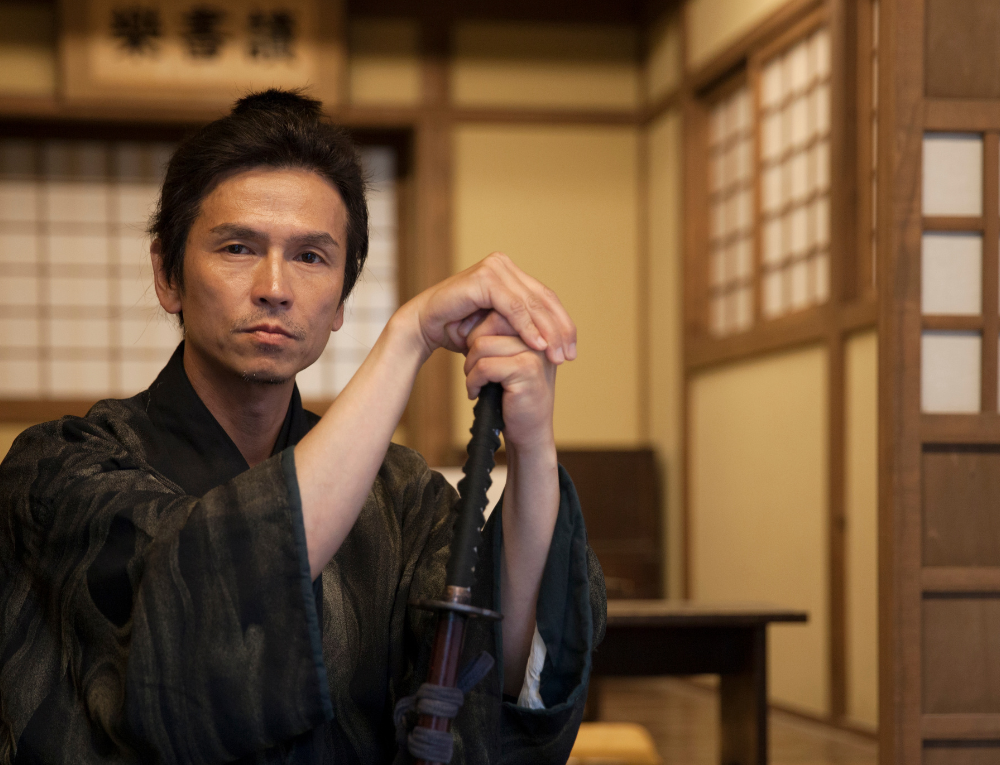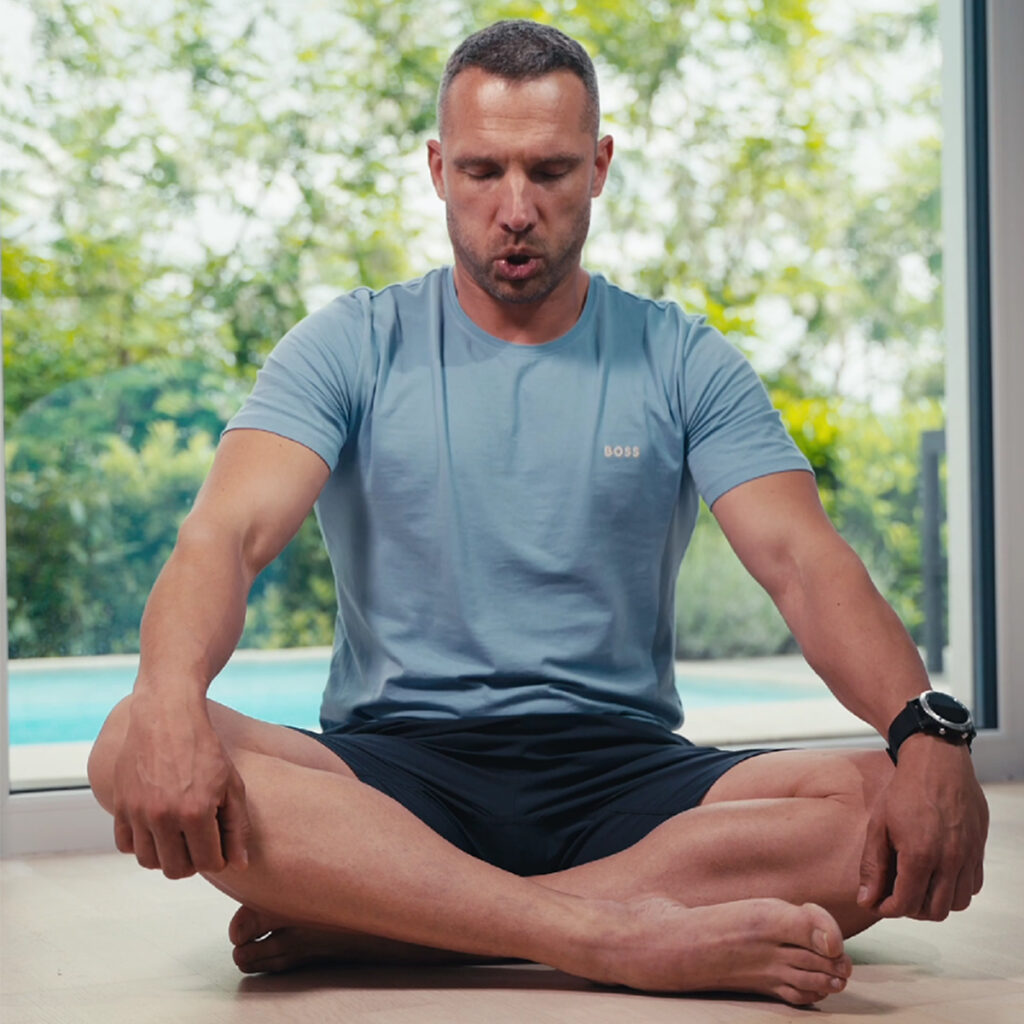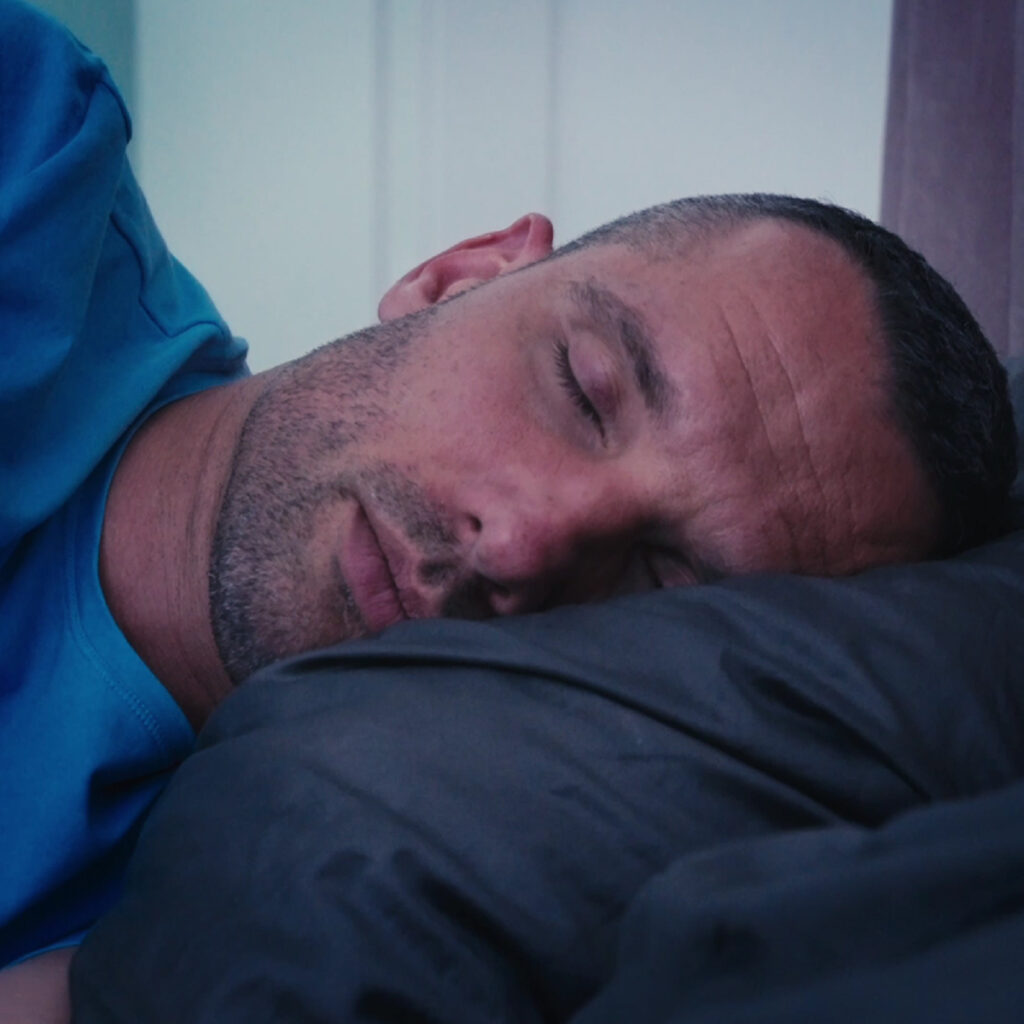In the series of blog posts Self-Mastery TalentX explores how peak performance is built from within. Through science-based tools and practical strategies, the focus is on developing mental and physical strength that leads to sustainable results.
Autor serije je Igor Šehić, a performance coach, mental trainer, and founder of Rize, who works with elite athletes, executive teams, and ambitious professionals. His approach is grounded in science, experience, and personal discipline — because Igor doesn’t just teach performance, he lives it.
How to navigate conflict and tough conversations without losing your cool.
Anyone working in today’s fast-paced business world knows how fast a normal workday can turn into a pressure cooker. One email lands wrong. A meeting goes off the rails. Someone pushes the same old button and suddenly your breath shortens, your jaw tightens, and your nervous system flips from strategy mode to survival mode. In that moment, you’re not choosing your response. You’re reacting to the chaos. And even the most disciplined professionals feel the urge to snap, shut down, or walk away.
U tom trenutku ne biraš reakciju nego reagiraš instinktivno.
Čak i najstabilniji profesionalci osjete nagon da planu, povuku se ili uzvrate impulzivno.
In environments with constant demands and high pressure, losing your temper isn’t a
small slip.
It’s expensive:
- it damages trust
- it breaks communication
- it lowers team performance
- it destroys psychological safety
- it creates hidden fear that kills creativity
Feels familiar? Good. Now picture this:
Same environment. Same people. Same pressure.
But your triggers don’t fire anymore. You stay calm while everyone else loses their center. Your clarity disarms aggression. Your tone resets the room. You become the person no conflict can shake.
This is why in elite sports and now in elite business, emotional regulation isn’t a “soft skill.” It’s a performance skill. And like any performance skill, it’s trainable.
But nothing changes because this paragraph inspires you. It changes when you deliberately train your nervous system the same way elite athletes train composure under pressure.
Most professionals simply hope for the best… until a conflict exposes every trigger they have.
What comes next is the opposite of hope: a step-by-step protocol to rewire how you respond under pressure.
Step 0: Understand What’s Really Happening in Your Brain
Before you learn any technique, you need to understand one thing: you’re not losing control because you’re weak or unprofessional. You’re losing it because your biology is doing its job.
Here’s what actually happens when tension hits.
Your amygdalathe brain’s threat detector fires first. Not only for physical danger, but for tone, facial expression, unexpected questions, sharp emails, or anything that feels like social risk.
The moment it activates, your body shifts into survival modeheart rate rises, breathing becomes shallow, muscles tighten.
A sada ključni dio. Kada amigdala preuzme kontrolu, prefrontalni korteks, dio mozga zadužen za logiku, regulaciju emocija i donošenje odluka, privremeno se povlači iz upravljačke pozicije.
Nije oštećen. Samo nadjačan.
Zato u konfliktu ne vidiš nijanse, ne razmišljaš jasno i ne biraš najbolji odgovor.
To nije tvoja slabost. To je biološki mehanizam.
Biti Majstor ZEN-a ne znači ostati miran pod svaku cijenu,
nego zadržati prefrontalni korteks aktivnim dok sve oko tebe pokušava izazvati tvoju reaktivnost.
A upravo tome služe sljedeći koraci.
Korak 1: Promijeni perspektivu
Znati što te pokreće ili trigerira je korisno ali nije dovoljno.
Ako se tvoja emocionalna stabilnost temelji na kontroli svakog ŠTO, dovoljna je samo jedna nepredvidiva situacija da izgubiš ravnotežu.
A ŠTO je najčešće konstanta.
Isti komentar. Isti ton. Isti obrazac ponašanja.
Ono što se mijenja je okruženje. Ljudi reagiraju nepredvidivo. Pritisak se pojavi niotkuda.
Prava promjena događa se kada umjesto ŠTO me smeta, počneš pitati: ZAŠTO me ovo uopće pogađa?
Zašto ovaj okidač ima toliku moć nada mnom?
Zašto me baš određene situacije tako lako povuku u reaktivnost?
Zašto moja biologija preuzme kontrolu brže nego što svjesno uspijem reagirati?
Za dugoročno rješenje problema, moraš prestati gasiti svaku iskru čim se pojavi. Nakratko spusti crijevo i dopusti da vatra gori. Ne zato da je ignoriraš, nego da prestaneš liječiti simptome i počneš razumijevati sustav koji ih stvara.
Sada si postavi ključno pitanje. Za tri tjedna, želiš li i dalje juriti naokolo, iscrpljen, reaktivan, gaseći male požare?
Ili želiš postati poput rijeke? Snažan, ukorijenjen, nepokolebljiv…jer znaš kako surađivati s vlastitom biologijom umjesto boriti se protiv nje?
Perspektiva se mijenja onog trenutka kada prestaneš pokušavati kontrolirati vanjski svijet i počneš savladavati unutarnji mehanizam koji na njega reagira.
Kada to klikne, spreman si za sljedeći korak.
Korak 2: Stvori sigurno okruženje
Ne možeš trenirati živčani sustav u istom okruženju koje ga preplavljuje. Prije bilo koje tehnike treba ti prostor u kojem se tvoji obrambeni mehanizmi mogu spustiti, makar na nekoliko minuta.
Regulacija emocija ne počinje vještinom, nego sigurnošću. Živčani sustav ne usvaja nove obrasce dok je u modu obrane. Treba mu stabilno, predvidivo okruženje u kojem se može prebaciti iz preživljavanja u učenje i prilagodbu.
Sigurno okruženje ne mora biti ništa grandiozno. Može to biti kut dnevnog boravka, balkon, priroda ili soba u kojoj se osjećaš prizemljeno i mirno. Bitno je samo da tvoje tijelo to mjesto prepoznaje kao prostor gdje možeš:
- opustiti obranu
- usporiti reakcije
- biti potpuno ti
To je tvoj laboratorij. Mjesto gdje isprobavaš, gradiš novo, resetiraš se i osnažuješ.
Jer nijedan alat poput disanja, meditacije, vizualizacije i opuštanja, neće biti učinkovit ako se tijelo ne osjeća dovoljno sigurno da ga usvoji.
Kada stvoriš taj prostor tvoj mozak napokon može učiti. I tada si spreman za dan koji te čeka.
Korak 3: Pripremi živčani sustav prije nego dan počne
Većina ljudi pokušava regulirati emocije usred sukoba. To je kao da pokušavaš naučiti samoobranu nakon što je udarac već sletio. Prekasno. Prava emocionalna kontrola gradi se prije ulaska u zonu pritiska.
Vrhunski performer poput sportaša, specijalnih postrojbi i astronauta, imaju isto pravilo: pripremi sustav rano da ostane stabilan kasnije. To ne znači da jutra moraš pretvoriti u spa ritual. To znači da treniraš dvije ključne sposobnosti svog živčanog sustava:
- Svjesna aktivacija
- Kontrolirano smirivanje
Evo kako to trenirati u svom sigurnom okruženju:
- a) Namjerna nelagoda
Izlaganje hladnoći, izazovniji trening ili kratki intenzitet šalju mozgu poruku: „Pod stresom sam, ali sam siguran.“
Tako učiš razlikovati nelagodu od prijetnje. To je temelj otpornosti u konfliktu. - b) Duboka regeneracija
Nakon aktivacije dolazi regulacija.
NSDR ili protokoli dubokog opuštanja resetiraju živčani sustav, smanjuju hormone stresa i drže prefrontalni korteks online. To je kao da prije radnog dana nadogradiš svoj operativni sustav. - c) Disanje
Dugi izdisaji, fiziološki uzdah i “box breathing” aktiviraju vagusni živac i učvršćuju smiren, reguliran osnovni ton živčanog sustava. Tada misliš jasnije, reagiraš sporije a odluke postaju promišljene i precizne.
Ne možeš kontrolirati ljude, situacije, ničije ponašanje ni raspoloženje. Ali možeš kontrolirati stanje u kojem im prilaziš. Ako tvoj živčani sustav dan započne stabilan ništa te ne može izbaciti iz ravnoteže.
Stabilnost počinje prije nego što te svijet uopće dotakne.
Korak 4: Postavi namjeru prije nego zakoračiš u dan
Reguliran živčani sustav daje stabilnost, ali namjera daje smjer.
Ako dan započneš bez jasne namjere, ulaziš u njega reaktivno, prepuštajući tuđem tonu i raspoloženju da određuju kako ćeš se osjećati i ponašati. Dovoljan je jedan oštar email i centar se izgubi.
Najbolji profesionalci zato dan počinju jednostavnom porukom svom mozgu: „Ovo je osoba kakva želim biti danas.”
Evo kako postaviti namjeru učinkovito:
- Identitet – odluči koju verziju sebe želiš utjeloviti
(„Ostajem smiren pod pritiskom.”) - Sidro ponašanja – odaberi jednu konkretnu praksu za taj dan
(sporiji ton, jedan udah prije odgovora, pozorno slušanje) - Ishod – odluči kako želiš završiti dan
(„Želim biti ponosan na način na koji sam reagirao.”)
Ovo nije mantra niti puka motivacija. Ovo je neurološko usmjeravanje, strategija koju koriste vrhunski sportaši, vojne jedinice i ljudi koji rade pod visokim opterećenjem. Time svom sustavu unaprijed govoriš koji obrasci ponašanja se aktiviraju kada stres dođe.
Kad je namjera jasna, konflikt te ne zatekne. Ti ga dočekaš spreman.
Pripremi tijelo. Usmjeri um. Zatim zakorači u dan.
Korak 5: Što učiniti prije, za vrijeme i nakon konflikta
Sukob se ne savladava u teoriji nego u stvarnim situacijama. Polako, nesavršeno, i upornim ponavljanjem. Baš kao i svaka druga vještina.
Ovo je jednostavan protokol koji možeš trenirati u praksi:
- Prije konflikta (onog trena kad osjetiš napetost)
- napravi jedan spor, dugi izdah — signalizira sigurnost živčanom sustav
- spusti ramena — tijelo se trenutno opušta
- podsjeti se namjere — „Kako želim reagirati upravo sada?”
Ovih nekoliko sekundi sprječava da amigdala preuzme kontrolu.
- Tijekom konflikta (u samoj žestini trenutka)
- uspori ton – sporiji govor drži prefrontalni korteks aktivnim
- uzmi dvije sekunde pauze – mikro-pauza mijenja impulzivnu reakciju u svjesni odabir
- postavi jedno pitanje prije nego odgovoriš – pitanja smanjuju napetost i otvaraju prostor za rješenje
- odgovori iz jasnoće, ne iz emocije – jer tvoja uloga je voditi, ne reagirati
Ovo je mikro-trening pod pritiskom. Upravo ovdje se gradi kontrola.
- Nakon konflikta (kada se prašina slegne)
- rekonstruiraj situaciju bez kritike – Što te pokrenulo? Što je bilo dobro? Što može bolje?
- potvrdi ono što si napravio ispravno -malu pobjedu bilježiš kao novi referentni obrazac
- promijeni jednu stvar za sljedeći put – malo podešavanje + ponavljanje = rast.
Ovdje nastaje neuroplastičnost. Ovdje se širi neuralna mreža otpornosti.
Ne postaješ emocionalno snažniji izbjegavanjem nelagode, već ulaskom u nju. Svjesno, smireno, korak po korak.
S vremenom, ono što te nekoć palilo više ne pomiče tvoju os. To nije slučajnost. To je trening.
Poslovna vještina koju većina nikada ne trenira
Emocionalna regulacija ne znači biti smiren. Znači biti učinkovit onda kada je najvažnije.
Svatko može funkcionirati kad je sve mirno. Ali dugoročno pobjeđuju oni koji ostanu staloženi kada se prostorija užari. Oni koji zadrže prefrontalni korteks aktivnim dok svi drugi klize u reaktivnost.
To je tvoja prednost. Tvoja konkurentska snaga.
A kao i svaka sposobnost koja nešto vrijedi, razvija se ponavljanjem. Udah po udah, trenutak po trenutak, konflikt po konflikt.
Ne treba ti savršenstvo. Treba ti dosljednost.
Ako namjerno treniraš svoj živčani sustav, promjena je neizbježna. Reaktivnost postaje izbor, napetost prelazi u jasnoću a sukob postaje prostor u kojemu daješ najbolje od sebe.
Većina ovo nikada neće trenirati. Zato oni ostaju reaktivni a ti možeš postati vođa.
























